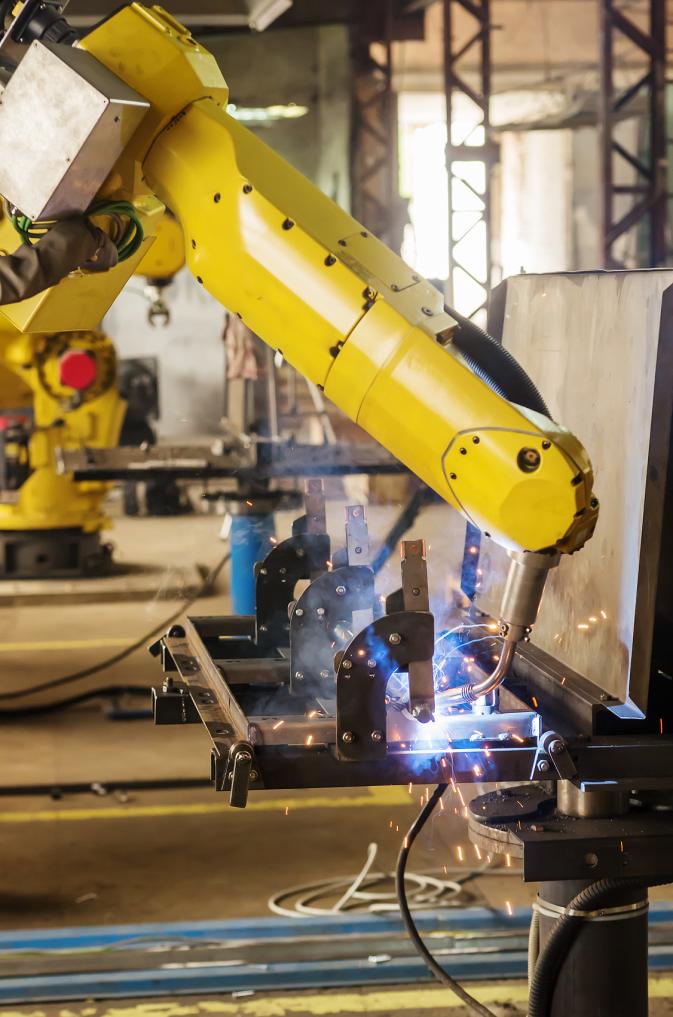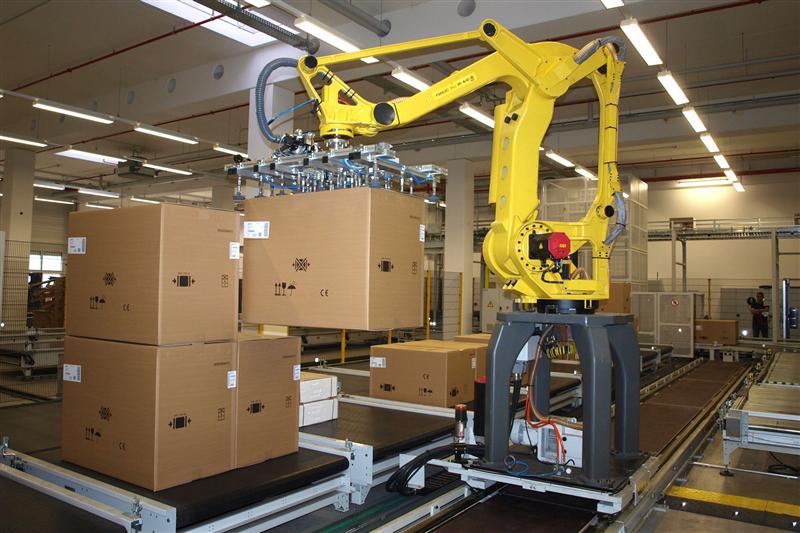News Details
What are the typical application scenarios of industrial robots?
Release time:
2024-10-21 11:33
Automobile manufacturing: Industrial robots are widely used in the automobile manufacturing process, including tasks such as welding, assembly, painting, dispensing, and inspection.
Ten classic application scenarios of industrial robots:
Automobile manufacturing: Industrial robots are widely used in the automobile manufacturing process, including tasks such as welding, assembly, painting, dispensing, and inspection.

Electronics production: Industrial robots are used for assembly, welding, handling, and testing of electronic devices to improve production efficiency and quality.
Food processing: Industrial robots are used in the food industry for packaging, boxing, sorting, and cooking tasks, ensuring the safety, hygiene, and efficiency of food production.
Medical surgery: Industrial robots assist doctors in performing precise operations during surgeries, such as microsurgery and robot-assisted surgery, to enhance surgical safety and accuracy.
Warehouse logistics sorting and transportation: Industrial robots play a key role in warehouses and logistics, used for tasks such as goods handling, stacking, packaging, and order sorting to improve transportation and delivery efficiency.

Metal processing: Industrial robots are widely applied in the metal processing field, including tasks such as cutting, milling, stamping, grinding, and polishing to enhance production speed and precision.
Plastic product manufacturing: Industrial robots are used in the plastic products industry for injection molding, extrusion, spraying, and assembly tasks to improve production efficiency and product quality.
Printing and packaging: Industrial robots play an important role in the printing and packaging industry for tasks such as folding, stacking, boxing, and labeling of printed materials to enhance production speed and consistency.
Detection and rescue: Industrial robots can perform tasks in hazardous environments such as fires, earthquakes, chemical leaks, etc. They can enter dangerous areas for detection and search-and-rescue operations, providing critical information to support rescue efforts.
Agriculture and horticulture: Industrial robots are used in agriculture and horticulture for tasks such as planting, harvesting, pruning, and plant care to improve agricultural production efficiency and sustainability.
These application areas demonstrate the diversity and breadth of industrial robots. They continue to innovate and develop, helping to improve production efficiency, product quality, and workplace safety.
With the continuous advancement of technology, their applications will continue to expand into more fields. Much of the convenience in our lives also stems from the extensive use of efficient and precise industrial robots that have improved overall social productivity.
Related News
What are the typical application scenarios of industrial robots?
Automobile manufacturing: Industrial robots are widely used in the automobile manufacturing process, including tasks such as welding, assembly, painting, dispensing, and inspection.
What are the operating procedures and precautions for welding robots?
A welding robot is an industrial robot that has welding programs preset in its control system, allowing the robot to automatically complete welding tasks.
What are the classifications of welding robots?
The types of welding robots are divided into spot welding robots, arc welding robots, laser welding robots, etc. The most common ones in the market are spot welding robots and arc welding robots.
Current status and development trends of welding robots!
Welding robots are robots that can autonomously perform welding tasks, and they play a crucial role in industrial production.












